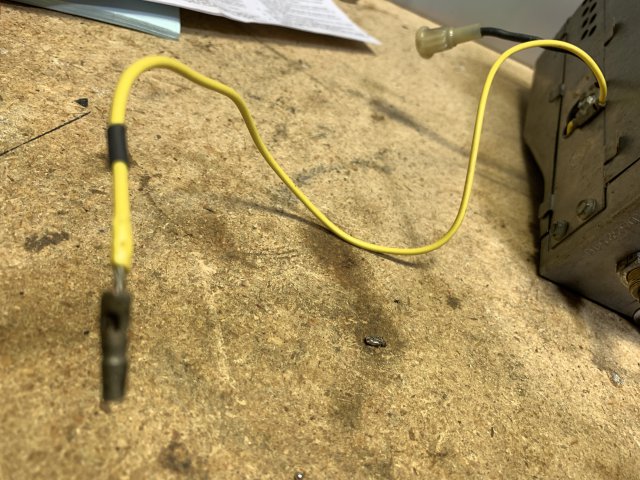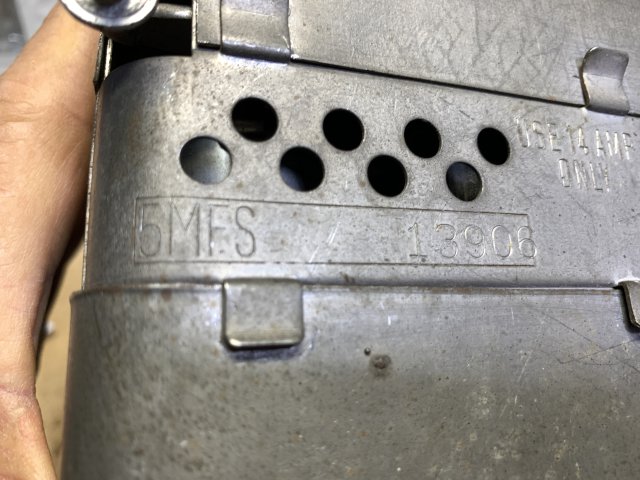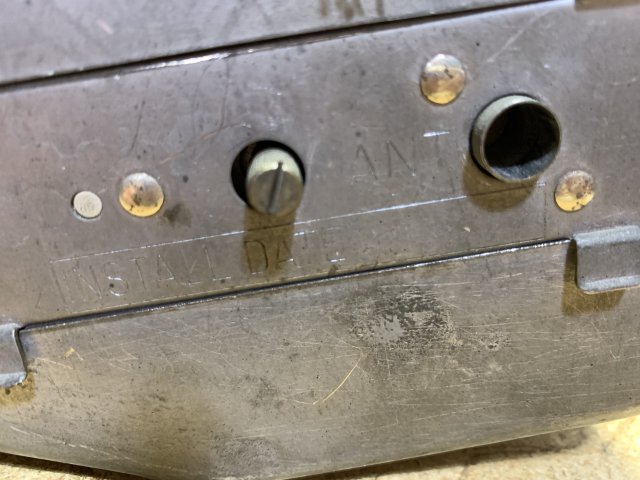- Last seen
- Joined
- Dec 29, 2014
- Thunderbird Year
- 1955
This winter one of my projects is to try to repair the original AM radio from my 6 volt, 1955 Thunderbird. When I purchased the vehicle the radio never played, except for an occasional loud static sound from the speaker. Since the push button that controls the on/off switch would only stay in the on position, I had no way of turning the radio off. I also noticed that when I would turn the tuning knob, sometimes the pointer would stop mid-way and you would have to use the station selector buttons to get it to operate again.
After removing the covers from the radio, I performed a complete cleaning and inspection. During my inspection, I discovered that the lever that engages into the slot of the on/off push button had too much clearance. This was the reason that the push button would not stay in the off position. By slightly bending the lever and with some light lubrication, I was able to get the on/off push button to function again.
The tuning control is an interesting design. It utilizes two clutch plates that connect the tuning knob to the tuner carriage. When you turn the tuning knob, the gear on the end of the tuning shaft rotates the first clutch plate. Since the clutch is engaged, the second clutch plate turns the gear that is on the end of the spline shaft and moves the tuner carriage. When you depress one of the station selector buttons, the clutches disengage the tuning knob shaft, allowing the tuner carriage to move without rotating the tuning knob. These clutches are also designed to slip, to prevent damage if you continue to rotate the tuning knob after the tuner carriage reaches the end of its travel.
The problem with tuning knob on this radio was that the clutch material had deteriorated from age and was no longer adhered to the clutch plates. After removing the clutch assembly from the radio it was disassembled; cleaned, lubricated, and new friction material was made from gasket paper. After cementing the new friction material to the clutch plates, the clutch assembly was reassembled and installed back in the radio. Now the tuning control was functioning as designed.
After testing the vibrator and replacing 3 defective tubes, it was time to see if the radio would play. To my dismay I was only able to received one station, and it was a very weak one at that. Upon further inspection I discovered that the top of the movable core (A8) of Osc. Coil (L4) had broken away from the adjustment rod, and the movable core was not moving with the tuner carriage.
The broken core and adjustment rod was removed from the radio, and a very intelligent friend of mine squared the top of the core on a lathe, and drilled and tapped the core’s center to match the thread pitch on the adjustment rod. To keep the movable core from turning on the adjustment rod, a lock nut was used. After reinstalling the repaired movable core (A8) back into the Osc. Coil (L4), we were able to receive a much stronger local station.
Before I can cement the adjustment core rod to the tuner carriage, I have to properly adjust the Osc. Coil (L4). The alignment instructions mention an alignment tool that is made with a wood and rubber strip.
Can someone in the group explain this alignment procedure?
So everyone can get a better understanding of the repairs that I made here is a full post with photos- https://forums.fordthunderbirdforum...-replacement-recommendations.13189/post-80205
Doug
1955 Thunderbird Blue
After removing the covers from the radio, I performed a complete cleaning and inspection. During my inspection, I discovered that the lever that engages into the slot of the on/off push button had too much clearance. This was the reason that the push button would not stay in the off position. By slightly bending the lever and with some light lubrication, I was able to get the on/off push button to function again.
The tuning control is an interesting design. It utilizes two clutch plates that connect the tuning knob to the tuner carriage. When you turn the tuning knob, the gear on the end of the tuning shaft rotates the first clutch plate. Since the clutch is engaged, the second clutch plate turns the gear that is on the end of the spline shaft and moves the tuner carriage. When you depress one of the station selector buttons, the clutches disengage the tuning knob shaft, allowing the tuner carriage to move without rotating the tuning knob. These clutches are also designed to slip, to prevent damage if you continue to rotate the tuning knob after the tuner carriage reaches the end of its travel.
The problem with tuning knob on this radio was that the clutch material had deteriorated from age and was no longer adhered to the clutch plates. After removing the clutch assembly from the radio it was disassembled; cleaned, lubricated, and new friction material was made from gasket paper. After cementing the new friction material to the clutch plates, the clutch assembly was reassembled and installed back in the radio. Now the tuning control was functioning as designed.
After testing the vibrator and replacing 3 defective tubes, it was time to see if the radio would play. To my dismay I was only able to received one station, and it was a very weak one at that. Upon further inspection I discovered that the top of the movable core (A8) of Osc. Coil (L4) had broken away from the adjustment rod, and the movable core was not moving with the tuner carriage.
The broken core and adjustment rod was removed from the radio, and a very intelligent friend of mine squared the top of the core on a lathe, and drilled and tapped the core’s center to match the thread pitch on the adjustment rod. To keep the movable core from turning on the adjustment rod, a lock nut was used. After reinstalling the repaired movable core (A8) back into the Osc. Coil (L4), we were able to receive a much stronger local station.
Before I can cement the adjustment core rod to the tuner carriage, I have to properly adjust the Osc. Coil (L4). The alignment instructions mention an alignment tool that is made with a wood and rubber strip.
Can someone in the group explain this alignment procedure?
So everyone can get a better understanding of the repairs that I made here is a full post with photos- https://forums.fordthunderbirdforum...-replacement-recommendations.13189/post-80205
Doug
1955 Thunderbird Blue
Last edited by a moderator:





